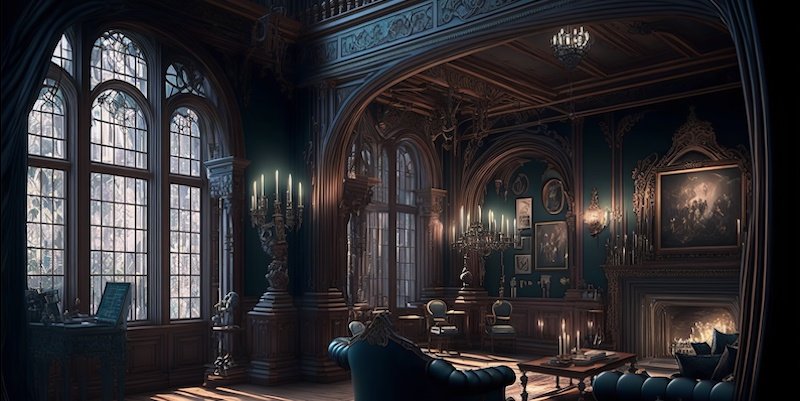The idea of school instills a sense of dread in many of us. After all, school requires us to toil day and night in pursuit of numerical averages that will make or break our future. This obsessive emphasis on work and grade averages clouds the inherent function of schools and other institutions of higher learning: the spreading of knowledge. As schools become more and more centered around social life, future careers, and distributing mountains of work to students, responses also begin to pop up. Many students, particularly those who seek higher education, have taken an interest in the aesthetics and subculture of dark academia. But what is dark academia, and what makes it so popular among today’s students?
Simply put, dark academia is a subculture that focuses on reading, writing, and learning, as well as upper-class student life in the 19th and 20th centuries. It draws inspiration primarily from the novel The Secret History by Donna Tartt, which guides people in implementing the fashions and lifestyle associated with dark academia into practice. Notable elements of the dark academia aesthetic include androgynous (and often more expensive) styles inspired by historical outfits, classic texts, and the romanticization of study and learning. However, dark academia offers a variety of tones, media, and lifestyles associated with the aesthetic. Some may opt for older styles and prefer novels like Frankenstein, whereas others may emulate the mid-1900s with more inventive and recent fashion, music, and literature.
The first trace of the aesthetic’s popularity began around the 2010s when it marketed itself as a small niche for academic individuals who enjoyed older literature. Experiencing massive growth during the COVID-19 years through the internet, dark academia now constitutes a significant part of major social media platforms such as TikTok and Instagram. Common examples of posts often tagged with dark academia include videos highlighting the visuals associated with a dark academic lifestyle — written letters, piles of old books, closets full of tweed blazers — and book recommendations. But what caused the rise of such an aesthetic, especially in the modern world we live in today?
There is no one cause for dark academia’s popularity among young people today. However, some sources outline one primary reason why the aesthetic has gained popularity, especially in a world continually seeking to modernize. According to jacobin.com, reforms in the educational system lead to students having to work more hours to afford places to live and sustenance. As a result, they have far less time to focus on their studies and gain knowledge, almost defeating the purpose of seeking higher education in the first place. However, dark academia promises learning and intellectual achievement that students can no longer find in the real world. As a result, students find themselves drawn to the Dark Academic aesthetic to feel like they’re accumulating the knowledge they signed up to get.
Ultimately, dark academia as an aesthetic revolves around learning and emulates historical and classical ideas of educational institutions. It became popular due to the changes in our society that made higher education less centered around learning than students desired. Though dark academia seems to be anything but a reflection of our world, the story of its existence and growth shows us that the outer world does affect these seemingly irrelevant microcosms.
Works Cited
“The ‘Dark Academia’ Subculture Offers a Fantasy Alternative to the Neoliberal University.” Jacobin.com, jacobin.com/2021/12/instagram-tumblr-humanities-romanticism-old-money-uk.
Admin. “Dark Academia: What Is It and Why Is Everyone Obsessed with It.” The Bookish Elf, 12 May 2023, www.bookishelf.com/what-is-dark-academia/.
Bateman, Kristen. “Academia Lives — on TikTok.” The New York Times, 30 June 2020, www.nytimes.com/2020/06/30/style/dark-academia-tiktok.html.
